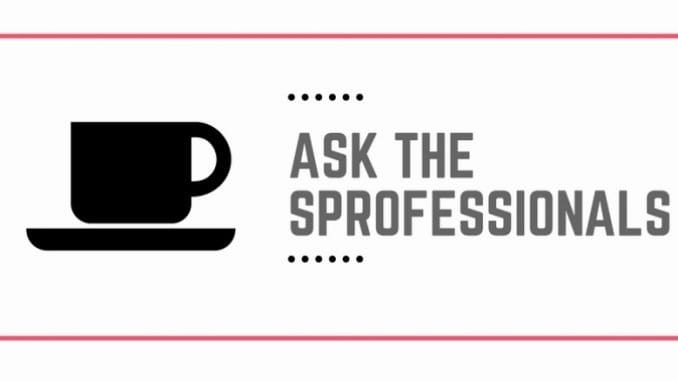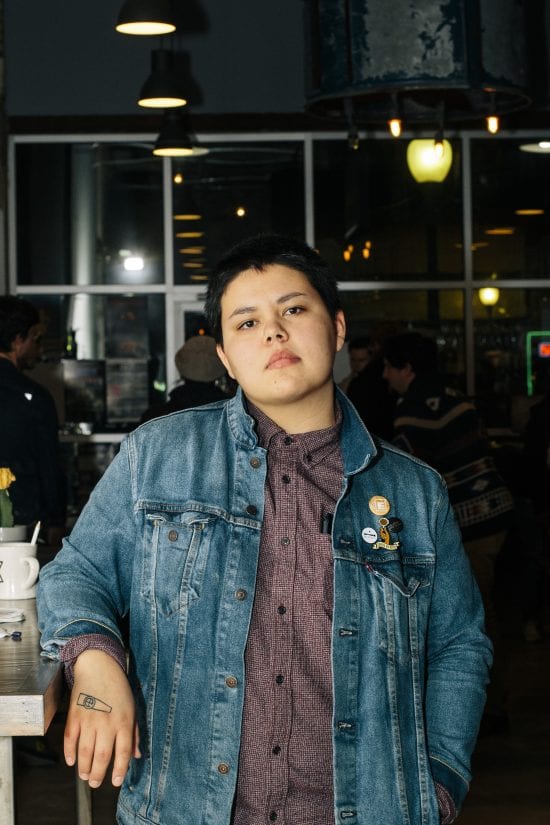
In this series, industry experts sound off on issues around workplace policies, breaking down the ins and outs of how workplace systems affect morale and retention.
BY RJ JOSEPH
SPECIAL TO BARISTA MAGAZINE
We’re bringing “Ask the Sprofessionals” back! This post is part of a series where we ask pros about big questions in coffee. If you want to go back and read more, check out what the Sprofessionals have to say about activism in the café, promotions, communication, setting boundaries in service, scheduling, and romantic relationships at work.
Volume 7—The Sprofessionals on Dress Code Policies
A panel of veteran coffee pros lends its expertise to a definitive factor in the café experience: dress codes.
Whether written or unwritten, whether formal or informal, all cafés have some form of dress code. Dress codes can affect not only morale, but also service style and customer perception of both the space and the product. How do different types of dress code affect the café experience, and how do they affect workers?
The Sprofessionals weigh in.
The Question: What are the pros and cons of a loose or strict dress code? How do they affect the café experience, both from a worker and a customer standpoint?
Oodie Taliaferro, barista
“The main benefit I see to a stricter dress code is more unity amongst staff. Days where one barista wears a button-down and the other wears an oldish T-shirt and a hat puts a weird dynamic on a bar shift in terms of respect from guests.
On the other hand, benefits to a looser dress code are more individual freedom, less opportunity for accidental sexist and transphobic language to be used in handbooks, and more comfort behind bar from your baristas.
Companies need to evaluate why they’re asking their baristas to do certain things. If they can’t give an answer without those answers including gendered or classist intent, then they don’t need to be included in dress code rules.”

Blair Smith, shop manager, Augie’s Coffee
“My first barista job had a dress code. We were allowed to wear jeans or any color pants as long as they had no holes, and shirts had to have a collar and long sleeves, solids or tasteful stripes but not plaid. At the time I was a bit short on money, so it was stressful to drop money on work clothes. After that, I honestly didn’t mind it because I felt like customers treated us with more respect.
Now, I have the ability to wear whatever I want, and that usually means T-shirts, which are definitely more comfortable. The downside is that overall I get asked more ‘what I want to be when I grow up.’
I think staff are happiest when they can wear whatever they want because it allows for expression. Being comfortable at work is priceless. I also think it helps for customer morale, because they feel like the barista across the counter is a regular person, which makes the shop feel more approachable. I can tell you from managing two very different cafés, the one with collared shirts had a three- to six-month turnover rate on average, and the one with no dress code has a three- to five-year turnover rate.
I do think when you allow employees to wear whatever they want, it’s hard to backtrack, so having guidelines with safety in mind helps avoid uncomfortable situations. Being asked to not wear something that exposes a lot of skin (e.g., crop tops) because of the nature of working with boiling liquids is definitely more appropriate than just saying, ‘You shouldn’t/can’t wear that.’ It’s important to have an on-paper policy because if there is a violation it’s in writing, and it won’t seem like the employee is being attacked or discriminated against.”
Steven Petrose, former assistant manager, Stumptown Coffee
“I’ve worked for a company that enforced wearing a company T-shirt, didn’t allow shorts, and required that everyone wear hair ties and bandanas. The easiest rules to enforce were the ones pertaining to health, safety, and state law, because I could say these are the rules that are out of my hands. Harder to enforce were rules around wearing shorts and the uniform T-shirts because they weren’t state mandated, but a personal preference of the owner of the company. I disagreed with the position of the owner but still needed to enforce the rules.
Strict dress codes rules outside of health and safety laws can be an infringement on how a person would like to present themselves. Looser dress codes give people the opportunity to come in to work as they want to be seen. I think there is a confidence that resonates from a person who is able to present themselves exactly as they’d like to be seen. I think that it’s easier for customers to see an employee as an individual and not a fleshy robot.
I agree with any and all dress code policies being written. Employers need to have a clear idea of what they want, and leaving it open for interpretation makes way for confusion. A written policy holds the employer accountable for their ideas and the staff accountable if they agreed to the policy upon hiring or when the policy was implemented. Having a written policy creates an opening for dialogue as well—that way, the policy is being critiqued and not the employer.”
Kendra Sledzinski, barista trainer and quality control, Joe Coffee
“One of the perks of being a barista is the supposed freedom to express yourself in how you dress. When people can dress how they want (within reason), they act more like themselves. I think this yields a better customer service experience, as staff is less like uniformed robots, and instead, actual people with different personalities. Maybe it’s just my experience, but I feel like it builds more personable customer relationships.
The only benefit I see to having a stricter dress code is taking the guesswork out of getting dressed at 5 a.m. for an opening shift. I understand hair and shoe policies for safety and health, but if it’s to look professional, then it makes me feel a little uneasy.
It’s also very important to have policies on paper as a means of accountability. All good businesses have clear communication as a means of accountability; if applicable, a dress code should be no different.”
JoEllen Depakakibo, shop owner, Pinhole Coffee
“The majority of the cafés I’ve worked since 2002 have had loose dress codes. One or two places since then have required black or chambray button-up collared shirts. For the times I managed stores with a strict dress code, it was easy to enforce because folks applying for the position understood that it was part of the job.
I honestly don’t think there was a negative effect on morale in either case. Having a looser dress code allows people to be more of themselves; dress is part of their expression. On the other hand, at places I worked that had stricter dress codes, people were passionate about the product they were producing so their individualism came through their creations; that is what sustained their joy and desire to be at the place they were employed. Another benefit of having a stricter dress code is less decision-making when it’s time to get dressed.
It’s also important to have the policy in writing so there aren’t any blurry lines. It’s good to be direct about that with staff in the form of a handbook that clearly states your intentions.”
The Takeaways:
- Most baristas prefer looser dress codes because of comfort, self-expression, and feeling more like an individual.
- The benefits to a stricter dress code are a sense of unity, ease of clothing selection, and potential to be seen as more professional.
- It’s easier to enforce rules based on health code than rules based on preference, and if you have rules based on preference, it’s best to disclose them before onboarding.
- Whatever dress code works for you, it’s best to have it in writing.
This is an online partner piece to our print article in the April + May 2018 issue of Barista Magazine, “Serving Looks: How to Craft an Inclusive Dress Code That Works for Your Café.” Do you agree with the Sprofessionals? Leave your take in the comments section.
 ABOUT THE AUTHOR
ABOUT THE AUTHOR
RJ Joseph roasts coffee and writes a blog called Queer Cup in addition to her other adventures in coffee journalism. Her writing focuses primarily on equity, workers’ rights, and alternatives to the status quo. In her free time she loves cooking, reading, and being in Oakland, Calif. You can follow her on Instagram and Twitter.

